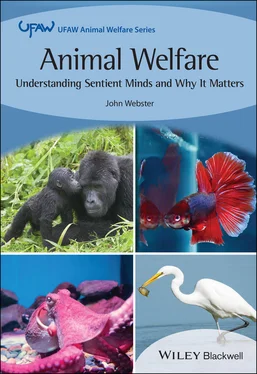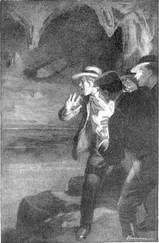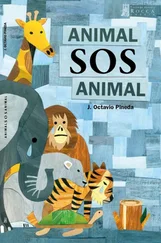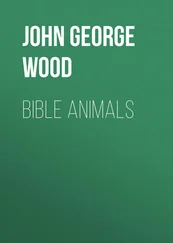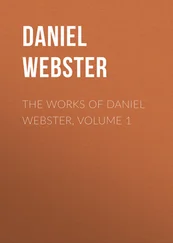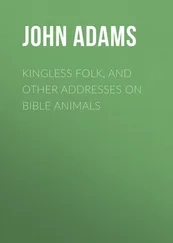John Webster - Animal Welfare
Здесь есть возможность читать онлайн «John Webster - Animal Welfare» — ознакомительный отрывок электронной книги совершенно бесплатно, а после прочтения отрывка купить полную версию. В некоторых случаях можно слушать аудио, скачать через торрент в формате fb2 и присутствует краткое содержание. Жанр: unrecognised, на английском языке. Описание произведения, (предисловие) а так же отзывы посетителей доступны на портале библиотеки ЛибКат.
- Название:Animal Welfare
- Автор:
- Жанр:
- Год:неизвестен
- ISBN:нет данных
- Рейтинг книги:4 / 5. Голосов: 1
-
Избранное:Добавить в избранное
- Отзывы:
-
Ваша оценка:
- 80
- 1
- 2
- 3
- 4
- 5
Animal Welfare: краткое содержание, описание и аннотация
Предлагаем к чтению аннотацию, описание, краткое содержание или предисловие (зависит от того, что написал сам автор книги «Animal Welfare»). Если вы не нашли необходимую информацию о книге — напишите в комментариях, мы постараемся отыскать её.
An Accessible Overview of the Concept of Sentience Throughout the Animal Kingdom and Why It Matters to Humans Animal Welfare
Animal Welfare — читать онлайн ознакомительный отрывок
Ниже представлен текст книги, разбитый по страницам. Система сохранения места последней прочитанной страницы, позволяет с удобством читать онлайн бесплатно книгу «Animal Welfare», без необходимости каждый раз заново искать на чём Вы остановились. Поставьте закладку, и сможете в любой момент перейти на страницу, на которой закончили чтение.
Интервал:
Закладка:
A few years ago, Compassion in World Farming (CIWF) released a shocking video of behaviour in a small abattoir. Lambs for slaughter were hung up by driving a hook through their legs behind the Achilles tendon prior to stunning and having their throats cut. In this video, four lambs were hung on hooks and left to struggle while the slaughterman went off to smoke a cigarette. From the lambs’ perspective, this was cruelty in the extreme. I suggest, however, that from a human perspective this may not have been deliberate cruelty but an extreme case of mindlessness. It had never occurred to him, or been explained to him, that sentient animals are capable of suffering. If he had been really cruel, he would have watched.
My most extreme personal experience of the mindless ill‐treatment of animals came from a large commercial pig abattoir in Beijing. Pigs transported to the abattoir in crates had been gaffed by the neck and hauled out of their crates on long poles like inert sacks of corn. This was not only appallingly cruel, to our eyes, but spectacularly counterproductive because the pigs fought them every inch of the way. The Bristol team designed a humane handling system whereby the pigs were able to move out of the vehicles and down a well‐designed passage at their own speed with minimal stress and human interference. The abattoir owners were delighted with this new system because they were able to reduce the number of staff needed to ‘handle’ the pigs by over 50%.
These two instances of mindless ill‐treatment may be attributed to ignorance. However, ill‐treatment on an industrial scale, carried out with the approval of the highest authorities, remains a problem in the so‐called developed world and to the present day. The number of chickens killed and consumed by humans every day is approximately 70 million. Furthermore, most of them are unlikely to experience much that could be quality of life before they die. In the words of Ruth Harrison, the godmother of the Animal Welfare movement: ‘ If one person is unkind to one animal, it is considered as cruelty but when a lot of people are unkind to a lot of animals, especially in the name of commerce, the cruelty is condoned and, once large sums of money are at stake, will be defended to the last by otherwise intelligent people ’ (29). It was Ruth who pointed out the absurdity of the UK Protection of Birds Act (1964) which required any caged bird to be given enough space to flap its wings but then stated ‘provided this subsection does not apply to poultry’ . This subsection meant that, at the time, the Act did not apply to about 99% of caged birds. This is perhaps the most egregious example of the fallacy of classifying animals as commodities in term of their utility to us, rather than as sentient beings whose minds have been shaped by their genetic inheritance and their individual experience of life. It was sustained public pressure generated by pioneers like Ruth Harrison that compelled the European Union to pronounce in the Treaty of Amsterdam that ‘ Members shall, since animals are sentient beings, pay full regard to the welfare requirements of animals ’ (73). This is a clumsy sentence from a clumsy clause that is also littered with caveats and exceptions for regional and religious practices. Nevertheless, it did recognise in law the principle that animals used by us for food, scientific enquiry, or health and safety legislation should not be considered simply as commodities but treated with respect and concern for their wellbeing.
Animal Behaviour Science
This exploration of the minds of sentient animals draws heavily on scientific studies of animal psychology and behaviour. The scientific investigation of animal behaviour is concentrated on two main themes. The first is the study of how animals behave in their natural habitat. This can establish their behavioural needs and the actions they perform to meet these needs. From this, we can build up a reasonably comprehensive picture of the resources (e.g. diet, physical and social environment) they require to achieve a sense of physical and mental wellbeing. With this information to hand, we can devise management policies that seek to address these needs whenever we modify their natural habitat to suit our own needs for food, companionship, sport, safety or scientific endeavour.
The second approach is to present animals with a set of questions relating to their perceived needs and measure their responses. This is the science of motivation analysis (16). The simplest version of this approach is the Preference Test . In a typical experiment, the animal is given a choice, e.g. between two foods or two environments and invited to demonstrate a preference. The choice may be between options that we guess might create more or less satisfaction (e.g. two types of bedding material for pigs), or between options that may be more or less aversive (e.g. barren vs. enriched cages for hens). One classic approach is to place the animal in a T maze that allows it to choose between the two options of taking the path to the right or the left. This can tell us quite a lot. Pet food manufacturers may discover flavours preferred by cats (although cats are fickle creatures). Designers of enriched environments for intensively reared pigs or chickens can get some idea of the fixtures and fittings that these animals appear to favour or avoid. However, preference tests can sometimes reveal evidence to indicate that the scientist and the experimental animals are not thinking the same way. In one such experiment, mice were asked to choose between two environments deemed by the scientist to be more or less enriched by traversing a narrow tunnel between the two. Most mice chose to spend the majority of time in the tunnel. For them, this was better than either of the choices on offer (66). The scientists had assumed the mice would choose on the basis of comfort, whereas, in their minds, we must assume that the primary need was for a sense of security. The scientists posed a specific question to these mice and got an unexpected answer. It was the wrong question, but they had a better understanding of mice as a result.
The main limitation of the preference test is that it makes no distinction between choices that are trivial and those that really matter. A more advanced approach to motivation analysis is to measure the strength of motivation by how hard an animal is prepared to work to get a reward in the form of a pleasant experience such as food, or relief from an unpleasant experience such as cold, pain, isolation, or a barren environment (16,45). Examples of the currency used to measure cost include the number of times the animal has to press a lever, or the amount of pressure it has to exert on a gate to obtain the reward. Specific rewards are ranked as more or less price elastic or price inelastic. Most animals, unless satiated, will continue to work for a food reward as the price is increased, which makes it price inelastic. The marginal reward of a different lying surface, e.g. straw vs. wood shavings may be price elastic: i.e. not worth too much effort. While the preference test can do no more than establish behavioural priorities, motivation analysis can determine how much these things matter.
The aim of motivation analysis is to devise tests that enable an animal (e.g. a rat or chicken) to demonstrate, by way of its actions, how it feels about the challenge with which it is faced, positive, negative, or indifferent. Having demonstrated that the test animal is motivated to act to receive a specific reward such as food or avoid a potentially unpleasant experience such as isolation or confinement, the scientist then measures the price the animal is prepared to pay to improve its welfare. They observe this behaviour, review the results in the light of current understanding as already described in the scientific ‘literature’ and form conclusions based on evidence as to the preferences and strength of motivation of the animal. This will be set out for publication in words, tables and diagrams. The scientist has used the medium of language to describe conclusions and decisions that arose first in the mind of the rat or chicken in order that other humans might better understand how it feels to be that chicken. This is reverse anthropomorphism, pure and simple.
Читать дальшеИнтервал:
Закладка:
Похожие книги на «Animal Welfare»
Представляем Вашему вниманию похожие книги на «Animal Welfare» списком для выбора. Мы отобрали схожую по названию и смыслу литературу в надежде предоставить читателям больше вариантов отыскать новые, интересные, ещё непрочитанные произведения.
Обсуждение, отзывы о книге «Animal Welfare» и просто собственные мнения читателей. Оставьте ваши комментарии, напишите, что Вы думаете о произведении, его смысле или главных героях. Укажите что конкретно понравилось, а что нет, и почему Вы так считаете.
